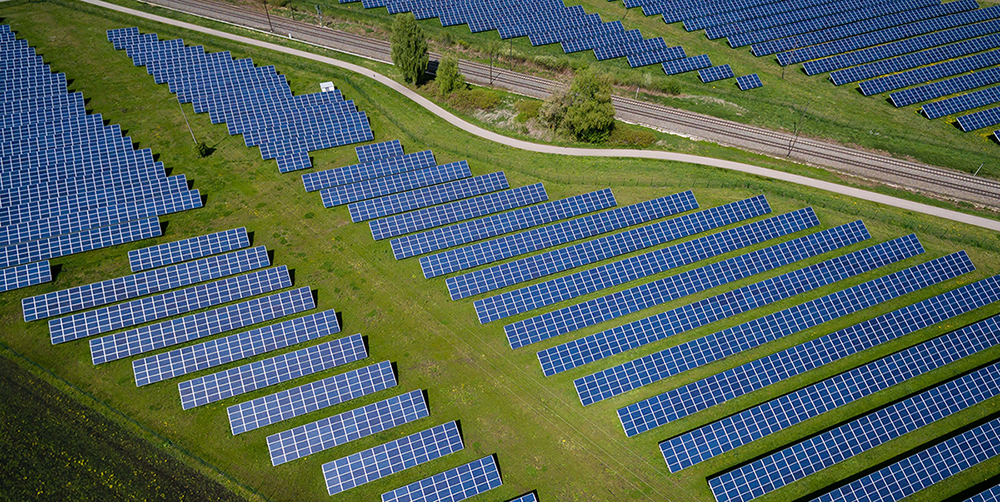The principal aim of the European Green Deal is to reach climate neutrality by 2050 and in order for the European Union to reach such target, one of the goals is to achieve net-zero greenhouse gas emissions. The European Commission has guaranteed to make existing legislation fit for 55% emission reduction by 2030 (also known as the 2030 Climate Target Plan).
The EU Green Deal is essentially a set of policy initiatives covering several different sectors, including construction, energy, biodiversity, sustainability, food and transport. One of the policy areas which constitutes a significant pillar under the EU Green Deal is Clean Energy.
In December 2018, the reformed Renewable Energy Directive 2018/2001/EU came into force – forming part of the Clean energy for all Europeans package. This package is aimed at retaining the EU as a global leader in renewables and such policies focus on the transition from fossil fuels towards cleaner energy – in line with the commitments enshrined in EU’s Paris Agreement. The Paris Agreement was formally ratified on the 5th of October 2016 and was the first (of hopefully many more to come) legally binding global climate change agreements. This Agreement focuses on several aspects such as reducing emissions and global stock-take wherein governments agreed to meet every 5 years to analyse the collective progress towards the long-term goals with respect to climate change.
In accordance with the Renewable Energy Directive, ‘energy from renewable sources’ or ‘renewable energy’ is defined as energy from renewable non-fossil sources, namely wind, solar (solar thermal and solar photovoltaic) and geothermal energy, ambient energy, tide, wave and other ocean energy, hydropower, biomass, landfill gas, sewage treatment plant gas, and biogas.
Solar energy, for one, is energy from the sun which in return can be utilised to produce both electricity and heat. According to Eurostat, in 2017 solar power contributed to the European energy mix with 3.6% of EUR-28 gross electricity generation.
To date, research focuses on the following three methods of solar energy:
- Photovoltaics: This converts sunlight into electricity by exploiting the photovoltaic effect and thus creating voltage or electrical current by exposure to light – such as solar panels.
- Concentrated solar power: CSP uses mirrors to concentrate the sun’s energy to drive steam turbines that create electricity.
- Solar heating/cooling: Solar thermal collectors are used mainly for producing domestic hot water in residential buildings. The economic situation of each Member States plays a big role in the integration of heating/cooling systems as the viability heavily depends on the local conditions and the local fuel price.
It is evident that for solar to become an even more regular source of clean energy and thus to mitigate the use of fossil fuels as a source of energy, generation costs need to be decreased and the effectiveness of converting sunlight to energy needs to be increased rigorously.
Of course, the level of potential for renewables will vary according to the geographic position of the Member State. Malta for example, has great potential with respect to solar energy due to the abundance of sunshine.
At the same time, we are witnessing a proliferation of innovative green technologies appearing on the market which are capable of generating zero-carbon energy with zero-waste. These technologies are, however, not your classic solar, wind, tidal solutions nor any of the above non-fossil source examples cited in the definition of renewable energy. Witnessing this emerging market of green technology one can’t help but wonder whether the above definition of renewable energy – which is limited to wind, solar, tidal and the above non-fossil sources – is sufficient to foster an innovative green economy and encourage investment in green technologies or whether it might actually hinder this.
And these technologies are instrumental in the effective implementation of the Green Deal. Taking Malta as an example – the obvious choice for us is solar energy – but imagine if these new technologies could work together with solar technologies to boost their effectiveness and allow solar solutions to reach their full potential.
It is imperative to utilise this decade or so to focus on constructing the right legislative framework for renewable energy. We need to ensure that any renewable energy framework is, above all, technologically neutral so as to enable this desperately required growth of renewables.
In a nutshell, Malta needs to enshrine the climate neutrality target into law and in doing so our legislators should really focus on how they are going to do this without impeding innovation and technology which might be most required by countries like ours.






